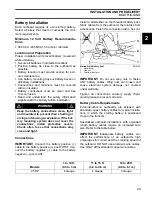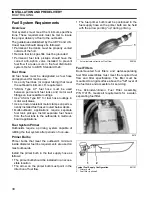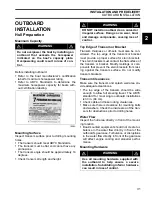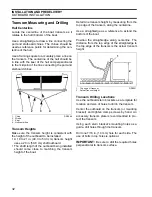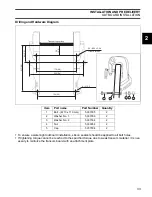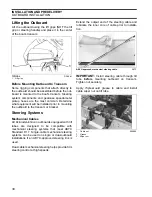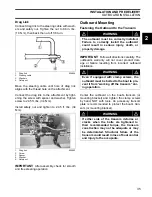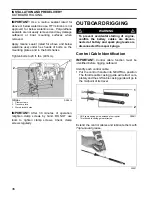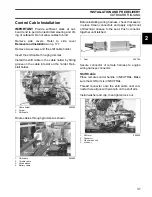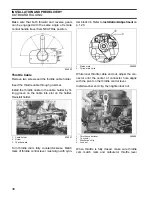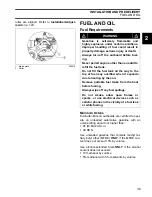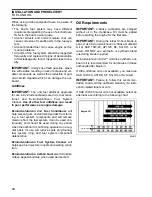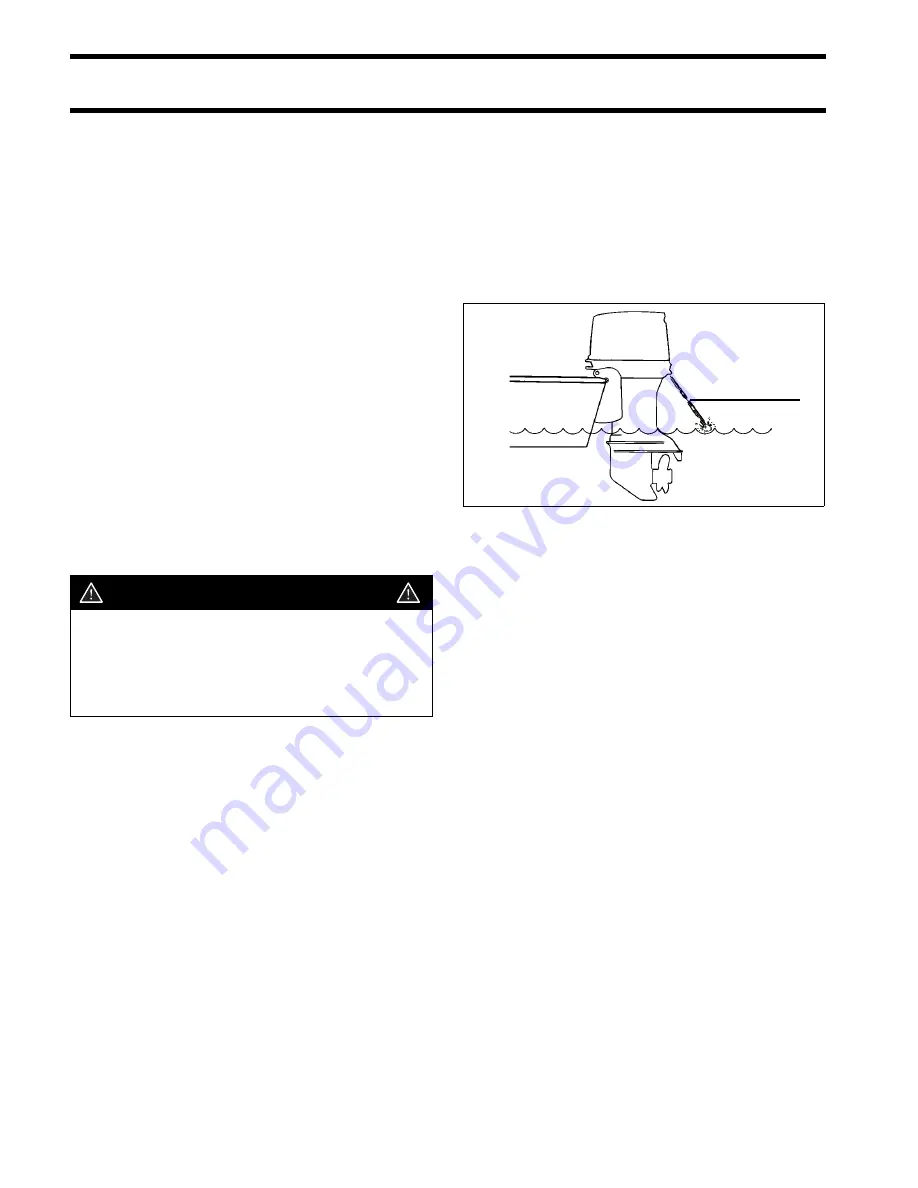
42
INSTALLATION AND PREDELIVERY
RUNNING CHECKS
Fuel System
Perform running checks of the fuel system by fol-
lowing these steps:
•
Squeeze fuel primer bulb until hard or activate
electric primer. Observe all fuel hoses and con-
nections. Repair any leaks.
•
Start outboard. Visually inspect all oil hoses and
connections and fuel hoses and connections.
Repair any leaks or misrouted hoses.
Emergency Stop Switch
Check emergency stop function. With outboard
running at IDLE, pull safety lanyard from emer-
gency stop switch. Outboard must stop immedi-
ately.
Outboard Controls
Confirm that controls can be easily moved into all
gear and throttle settings. Do not shift outboard
when propeller shaft is not turning.
Start-In-Gear Prevention
Start outboard and shift outboard into FORWARD.
Turn outboard OFF while lever is in FORWARD.
Attempt to restart the outboard. Outboard should
not start.
Pull shift lever back to NEUTRAL and restart out-
board.
Shift remote control lever to REVERSE.
Turn outboard OFF while lever control is in
REVERSE.
Attempt to restart the outboard. Outboard should
not start.
Tachometer Pulse Setting
Confirm accuracy of tachometer reading.
•
Adjust dial on back of tachometer to 6 pulse/12
pole setting.
Water Pump Overboard Indicator
A steady stream of water should flow from the
overboard indicator.
Operating Temperature
An outboard running at idle speed should achieve
a temperature based on the engine’s thermostatic
control. In general, the powerhead temperature
should reach at least 100°F (38°C) after five min-
utes of idling. Confirm that the powerhead
reaches idle temperature.
WARNING
Make certain that the starter will not oper-
ate when the outboard is in gear. The start-
in-gear prevention feature is required by
the United States Coast Guard to help pre-
vent personal injuries.
1.
Water pump overboard indicator
DRC4952
1


